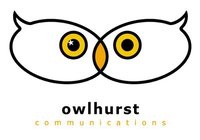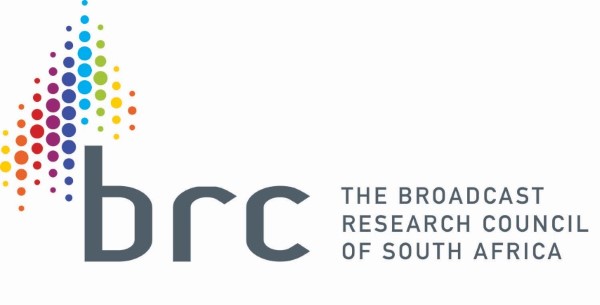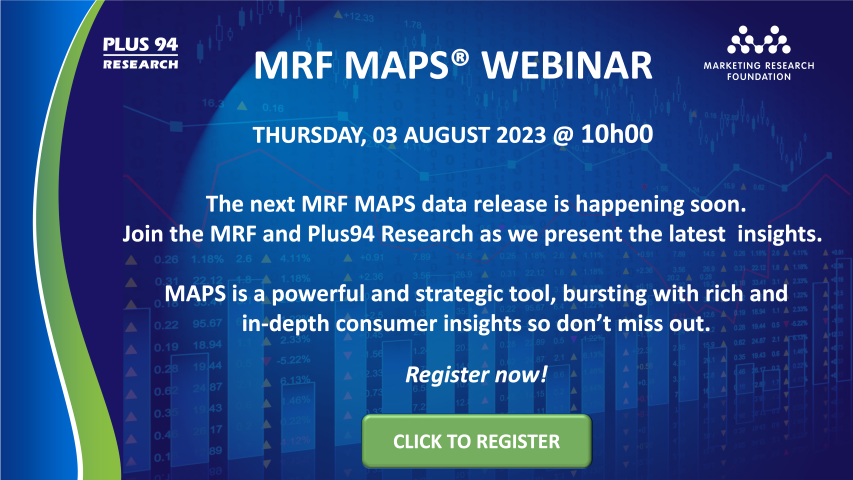The Marketing Research Foundation’s (MRF) latest iteration of MAPS (Marketing All Product Survey) data has been released. Interesting changes in consumer behaviour has come to light, especially over the past two years providing marketers with a strategic decision-making viewpoint.
The July release which, for the first time, enables users to compare two calendar years of data, delivers a national survey of 20 000 interviews which includes insights into respondents’ brand interaction across more than 3 376 brands.
MAPS validated by audit
A recent audit on the survey’s underlying processes, procedures, and protocols, by auditors 3M3A found that MAPS is of a “high standard”, healthy and in a good place. Some technical adjustments have improved the accuracy and stability of MAPS, ensuring that the MRF can ultimately deliver on the goal of making MAPS a world class survey enabling strategic decision making.
 The MRF’s CEO, Johann Koster says, “There have been many data releases recently from various organisations and it can become a little confusing as the data to many are not comparable. It is therefore important to understand where the MAPS research fits into the South African research sphere. The scope of MAPS is huge and includes life stages and lifestyles, financials, media consumption and consumer purchasing behaviours.”
The MRF’s CEO, Johann Koster says, “There have been many data releases recently from various organisations and it can become a little confusing as the data to many are not comparable. It is therefore important to understand where the MAPS research fits into the South African research sphere. The scope of MAPS is huge and includes life stages and lifestyles, financials, media consumption and consumer purchasing behaviours.”
“MAPS is a strategic tool; it is not a media currency,” adds Virginia Hollis, Chairperson of the MRF. “The insights from MAPS offer a detailed view of consumer behaviour across media, finance, retail and many other sectors, additionally, MAPS covers the entire age 15+ population, not just a section of South Africa.”
The MRF are in the process of having discussions with the Broadcast Research Council (BRC) and the Publisher Research Council (PRC) to become the industry hub survey for fusion with currencies and other industry research to provide a single source of consumer data. “These discussions are going well and are looking very positive,” says Hollis.
Fieldwork Landscape
Two research collection instruments are used for the MAPS study, over 20 000 face-to-face interviews and nearly 11 000 product and brand diaries have been completed during 2022. The two formats are integrated into a full sample by means of fusion. Sampling includes a distribution of 50% metro, 30% urban and 20% rural, validated by GIS (Geographic Information System) mapping.
Personal and household incomes decline
The survey has found that average personal income over the two-year period of 2021 and 2022 had declined from R4 883 to R4 438 while average household income has declined from R11 648 to R9 973. 2022 saw less people unemployed, more retirees, more self-employed and more students. More undergraduate degrees were achieved while diplomas and post-graduate degrees remained the same.
The impact of change in the economic landscape between 2020 and 2022 has become very clear to see. The effects saw fewer impulse buying opportunities, a shift in shopping patterns from instore to online, an increase in dependents other than own household and careful buying became the order of the day – the result – behaviour shifts in volume and cost-effective purchasing or thrift shopping.
Effects on consumers can be seen through quarterly data tracking
The effects on consumers and changes in product consumption and spending patterns are also clear to see especially when viewed through the lens of quarterly data tracking. For example, overall, the average monthly clothing or apparel expenditure decreased by just over half from R2 736 to R1 329 over the two-year period, but what is apparent in the quarterly data tracking is that the expenditure is showing signs of recovery from Q2 in 2022.
The data also indicates that while brand loyalty is on the rise, consumers are more willing to abandon a particular brand if it becomes too expensive.
Media landscape
Not only has the environment affected the economic landscape but media consumption too. 2022 saw never-before loadshedding stages and a massive upward trend of Gigawatt Hours (GWh) being shed especially in the second half of 2022 with huge impacts on consumer media consumption.
Since the easing of lockdown, the data confirms that consumers have been spending more time getting back to activities outside their homes. Clear upward trends are noticed for out-of-home engagements including gardening, running errands (school runs and shopping for example) and traveling to and from work. Other MAPS ‘time spent’ data points include, but are not limited to, checking social media, playing computer games, just ‘surfing’ the internet, watching TV (further segmented into watching sport or not) and listening to radio.
Year-on-year media penetration shifts saw a massive increase in online activities while traditional media, TV, radio and print saw various levels of decline.
Strategic decision-making for brands
MAPS delves deeply into brands and services. Financial service questions relate to commercial banking, financial services, saving and investment behaviour, stokvels and SASSA grants. Retail questions include household purchasing behaviour, products and brands, malls visited and fast-food purchasing behaviours. For example, the percentage of the population that used hair styling products decreased from 16% to 14% over the two-year period.
Hollis reiterates,” MAPS is an indispensable strategic tool in decision making, providing the ability to track shifts in behaviour and consumptions patterns of the South African consumer. Our vision for MAPS is to help business’ make better decisions. It has been designed specifically for marketers, media strategists/planners independently from any commercial interests. Our goal is for MAPS to be the single source of consumer data that marketers and agencies can rely on.
Thank you to our users and subscribers, stakeholders, the MRF board, the volunteers and Plus094 Research in this massive undertaking for getting MAPS published on a quarterly basis.”
For additional information on MAPS – http://mrfsa.org.za/maps/
Social Media: Facebook – https://www.facebook.com/MRFSouthAfrica/
LinkedIn – https://www.linkedin.com/company/mrfsa
 The MRF’s CEO, Johann Koster says, “The upcoming latest iteration of MAPS will provide insights into consumer behaviour and spending patterns from the first quarter of 2023. It will be interesting to see data from this year coming through.”
The MRF’s CEO, Johann Koster says, “The upcoming latest iteration of MAPS will provide insights into consumer behaviour and spending patterns from the first quarter of 2023. It will be interesting to see data from this year coming through.”


 The BRC’s CEO, Gary Whitaker says, “We are pleased and excited to announce that the new innovative Reach and Frequency radio data model, based on P7D (Past Seven Days) listenership for the South African market, is now available from the software bureaux Telmar and Nielsen.”
The BRC’s CEO, Gary Whitaker says, “We are pleased and excited to announce that the new innovative Reach and Frequency radio data model, based on P7D (Past Seven Days) listenership for the South African market, is now available from the software bureaux Telmar and Nielsen.”



